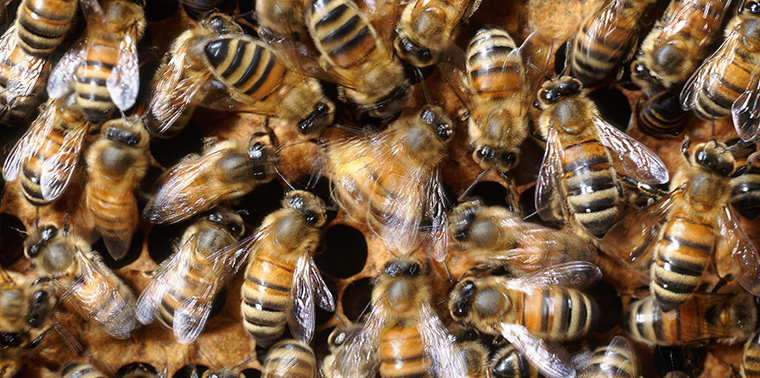You Should Bee Dancing
Biology 342 Fall 2222 by Sarah Gross and Nancy McWilliams
Navigation and Communication Through Movement in Bees
History of the Dancing Bees

In 1993 a german scientist name Karl Von Frisch observed that once one bee found a feeding station, often many others would soon follow. Through obersvations of the hives and careful attention to the correlation between the honey bees movements and which feeding station they arrived at, he was able to disover bee's round dance and their waggle dance. Since then researchers have been carefully examining the components that go into the dance communication and working to understand what other information is conveyed in those interactions

How the "waggle dance" works
Honey Bees help to deliver information on resources to other bees through various cues during their waggle dance. Von frisch discovered that the angle of the dance as compared to the gravity direction corresponded with the angle of the food source to the sunlight. Also the speed of the dance and the number of “waggles” helps to convey the distance between the hive and the food source. During the dance, the observer bee keeps an antennae on the dancing bee or listens to the wingbeats, allowing it to be close enough to observe the sensory cues that are released during the dance. These cues are sound produced by the wings, the vibration of the substrate, odor and tactile cues to antennae, and vibrations on the surface the bee is dancing upon, all of which help to convey information on the position of the food sources.
Tinbergen's 4 Questions
Tinbergen's four questions, named after Nikolaas Tinbergen, are complementary categories of explanations for behaviour. These are also commonly referred to as levels of analysis(MacDougall, 2011). It suggests that an integrative understanding of behaviour must include both a proximate and ultimate (functional) analysis of behaviour, as well as an understanding of both phylogenetic/developmental history and the operation of current mechanisms(Daly, 1983).
We chose this style of analysis of behavior because it is the standard for the study of animal behavior. The 4 questions resemble a structure of howdoes it work? (Mechanism), when in development? (Ontogeny), what purpose does it serve? (Adaptive Value), and how did it evolve? (Phylogeny). These questions also root from Aristotle's Four Causes.